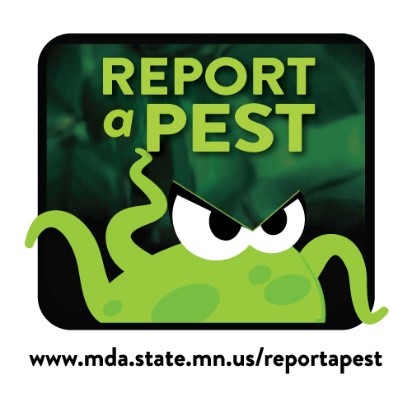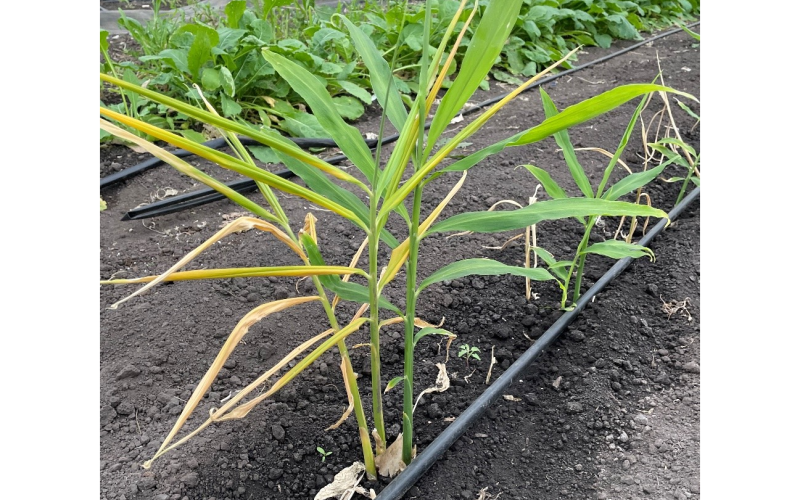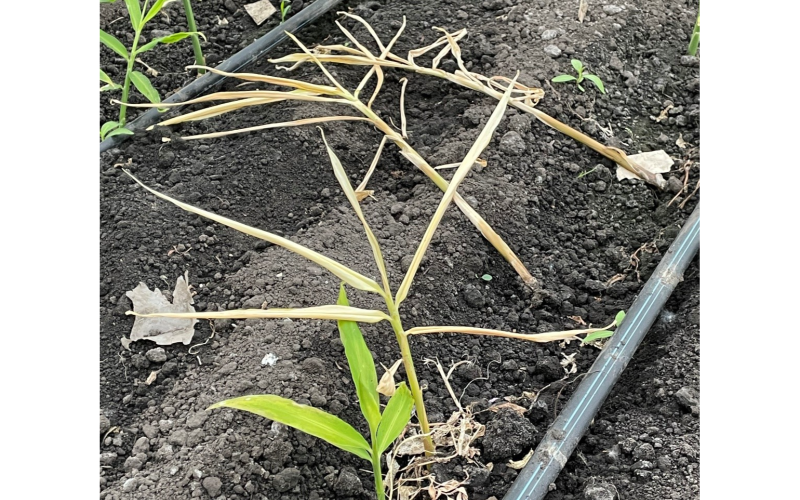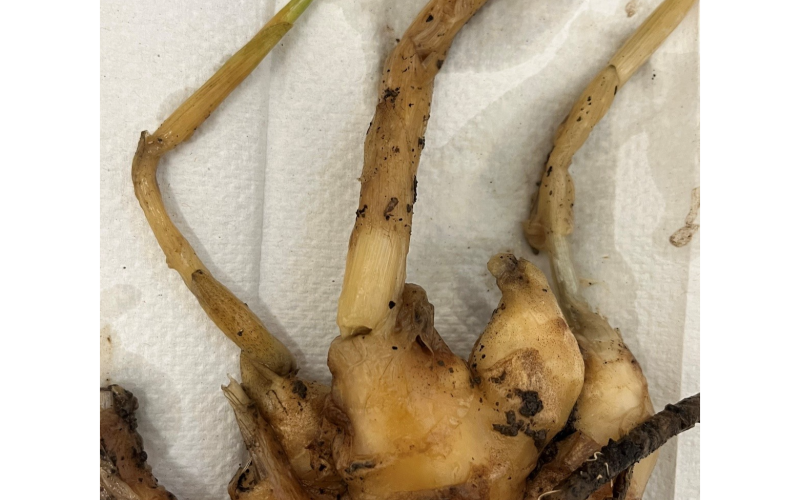Scientific Name: Ralstonia pseudosolanacearum
Distribution
Ginger wilt was first detected in Minnesota in 2023 in ginger grown in high tunnels. The disease is common in tropical and subtropical areas in Africa, Asia, and South America and is known to occur in Hawaii. Ginger wilt does not appear to survive Minnesota winter when exposed to outdoor temperatures. It is unknown if the bacterial plant pathogen of ginger wilt will survive in protected environments like a compost pile or heated greenhouse.
Biology
Ginger wilt is caused by the invasive plant pathogen, Ralstonia pseudosolanacearum. These bacteria can infect ginger, turmeric, and other plants in the Zingiberaceae family. Ginger wilt can spread on contaminated seed, soil, or water. Ginger wilt bacteria infect through the roots or seed and then move throughout the plant in the vascular system. The bacteria clog the vascular system, causing the plant to wilt. Infected rhizomes rot, releasing bacteria into the soil.
Identification
In the early stages of disease, the lower two to three leaves turn yellow and wilt. Eventually the entire plant turns yellow, wilts, and falls over. The base of the stem is soft, mushy, and easily detaches from the roots. The rhizome appears water-soaked and is soft and mushy. When cut, brown discoloration may be seen within the rhizome and sticky, white, bacterial ooze may emerge from the cut end of the rhizome and lower stem.
Reporting Ginger Wilt 
If you suspect you have found ginger wilt, take pictures of the symptoms. Email pictures, your name, and location to reportapest@state.mn.us or report online at https://www.mda.state.mn.us/reportapest. The MDA may contact you to request a sample for further laboratory testing to confirm the diagnosis.
Management
Prevention
The best management of ginger wilt is to prevent introduction of the bacterial plant pathogen.
-
Purchase seed from a reputable supplier that tests seed for disease prior to sale.
-
Carefully inspect seed ginger and do not plant any seed rhizomes with soft mushy areas, discolored or water-soaked sections, or obvious wounds.
-
Placing seed rhizomes in 122 degree Fahrenheit water for 10 minutes will kill bacteria on the surface of the seed rhizome but is not effective in eliminating infections deep within the rhizome. Maintain a consistent temperature, higher temperatures can reduce germination and lower temperatures will not effectively eliminate the bacteria.
Sanitation
If diseased plants are observed:
-
Reach out to the Minnesota Department of Agriculture (MDA) to report the disease and receive help in confirming the identity of the pathogen.
-
Redirect irrigation to prevent water from moving through the infested area into healthy plants.
-
Avoid moving soil from infested areas on tools, equipment, or shoes.
-
Promptly remove and bag all parts of the diseased plants. Diseased plants can be incinerated, buried 2 feet deep in an area where ginger will not be grown in future years, or double bagged and disposed of in a land fill.
-
Remove soil from all tools used with diseased plants. Then disinfect the tools with rubbing alcohol, 10% household bleach, or a commercial greenhouse disinfectant.
-
Before winter, open doors, vents, and side panels of high tunnels and greenhouses and allow the soil to freeze naturally.
Smarty Plants Podcast
 Discover Smarty Plants, the Minnesota Department of Agriculture's podcast that digs into the fascinating world of invasive species. Join expert guests as they share insights and solutions to protect our environment and agricultural resources. Visit Smarty Plants and start listening today.
Discover Smarty Plants, the Minnesota Department of Agriculture's podcast that digs into the fascinating world of invasive species. Join expert guests as they share insights and solutions to protect our environment and agricultural resources. Visit Smarty Plants and start listening today.




